Claudius Ptolemy, an exceptional ancient Greek scholar, played a pivotal role in various scientific disciplines, including astronomy, mathematics, geography, optics, and more.
Ptolemy meticulously documented forty-eight constellations, many of which he named and are still recognized today, such as the Great Bear, Taurus, Andromeda, and more.
In the field of mathematics, Ptolemy made significant discoveries, including the introduction of new units of measurement that are universally used to this day: degrees, minutes, and seconds.
Furthermore, Ptolemy’s contributions to geography and cartography were groundbreaking. He diligently gathered information from explorers and traders, ultimately calculating and recording the coordinates of over eight thousand distinct locations across Europe, the Middle East, and South Africa.
Claudius Ptolemy, a renowned ancient Greek astronomer, mathematician, and geographer, was based in the city of Alexandria. While little is known about Ptolemy’s personal life, it is evident that his contributions to science were significant and far-reaching.
During Ptolemy’s era (approximately 100 – 170 AD), people were already observing the night sky and showing a keen interest in understanding the celestial processes. Numerous astronomers were dedicated to unraveling the mysteries of the universe, and Ptolemy was among them. He subscribed to the geocentric theory of the universe, which posits that the Earth is at the center, with celestial bodies like the moon and stars orbiting around it. Sadly, this theory was later proven incorrect, yet it remained the dominant belief for over fourteen centuries.
Ptolemy documented forty-eight constellations. Many of the constellation names he created are still in use today. These include Taurus, the Great Bear, and Andromeda. Throughout the year, the Sun completes a full orbit in the sky and consistently passes through thirteen celestial constellations. The ancient astronomer Ptolemy believed that there were twelve such constellations, which make up the zodiac. It was thought that the constellation in which the Sun was positioned at the time of a child’s birth determined their character and destiny.
Ptolemy made numerous contributions to mathematics. He compiled a table of circle chords, revealing new divisions that we now use to measure the degrees, minutes, and seconds of a circle.
Ptolemy dedicated a significant amount of effort to the advancement of geography and cartography. He authored numerous writings on geography, complemented by an extensive collection of maps. Ptolemy meticulously calculated and documented the coordinates of over eight thousand distinct locations across Europe, South Africa, and the Middle East. These works encompassed the coordinates of cities, rivers, and lakes, complete with their respective latitude and longitude. Regrettably, a vast number of handwritten maps from that era have not withstood the test of time. Travelers during that period relied on Ptolemy’s maps not solely for navigation purposes, but also to illustrate the expansive global population and its interconnectedness.
Ptolemy’s contributions to the field of knowledge are immeasurable, and many of his teachings continue to shape the modern world. While we may be unaware of the specifics of Ptolemy’s personal life or character, his impact on the advancement of science is undeniable.

Hot topics of today
The ear is a vital and essential part of our overall body. Through the ear, we perceive and recognize sound signals, comprehending all the information communicated by the world around us
Cacti are perennial, flowering plants. They belong to the clove-flower family. Cacti can be categorized into four groups:
Lions are predatory mammals and members of the cat subfamily. They inhabit savannahs in Africa and India, although they can occasionally be found in forests or scrubland as well. Л
Claudius Ptolemy was a prominent ancient Greek astronomer, mathematician, and geographer who conducted his studies in Alexandria. Although there is limited information about Ptolemy’s life and work, we still possess some knowledge
It is common knowledge that there is a vast array of creatures, including animals, insects, and birds, among others. Unfortunately, a significant portion of these species is currently at risk of extinction. With this in mind, an individual took it upon themselves to compile all the information about these endangered species into a single book.
Claudius Ptolemy made an indelible mark on the world of science. He made significant contributions in the fields of astronomy, physics, mathematics, geography, and even music. His expertise in these areas has been documented and passed down through the ages.
There is very limited information available about the scientist’s life. Only a few details can be gathered from Claudius’s own writings. One of his notable works was a handbook on astronomy, which includes information about the timing of astronomical observations of celestial bodies. Based on these observations, it can be inferred that he lived between the years 127 and 165. It is also known that he resided in the vicinity of Alexandria, in what is now modern-day Egypt. As for his appearance, only sculptures have survived, but they are believed to depict a typical representation of a scientist from that era.
Little is known about Claudius’ personal life. There is no information about his children or marital status. However, it is known that he had students and assistants who helped him with his experiments and discoveries. The biography of Claudius Ptolemy remains largely a mystery to this day.
Claudius Ptolemy’s knowledge was highly significant to the field of science. That is, until the renowned poet Omar Khayyam uncovered the falsification in his works. It turned out that the positions of celestial bodies had already been described by the scientist Hipparchus long before Ptolemy. For a while, Claudius’ scientific works were considered irrelevant, but they were later disproven by other scientists.
Unique Report #2
Claudius Ptolemy, an ancient Greek scientist from the 2nd century AD, was believed to have been born in the year 100 AD in the Egyptian city of Pelusium. During that era, Egypt was under the rule of the Roman Empire, and Claudius himself held Roman citizenship. Historical records indicate that he resided in the city of Alexandria, Egypt from 127 to 151.
Claudius Ptolemy’s extensive range of scientific pursuits encompassed various fields such as astronomy, geography, mathematics, mechanics, optics, and even music. It is speculated that the vast collection of works housed in the library of Alexandria played a significant role in the development of his scientific endeavors.
In order to observe the celestial bodies, Claudius Ptolemy invented specialized instruments known as astrolabon and triquetrum.
Aside from studying the stars and the Earth, Ptolemy also contributed to various other fields such as mathematics, optics, astrology, mechanics, and music. Unfortunately, not all of his works have survived to this day. Some of Ptolemy’s writings have been lost, and we only know about them through mentions by other scholars.
Although Ptolemy’s work was not always entirely accurate, he played a significant role in advancing the sciences during ancient times. In recognition of his contributions, a crater on the moon has been named after him. Additionally, there is a whole constellation named after him, which Ptolemy himself described in 130 AD.
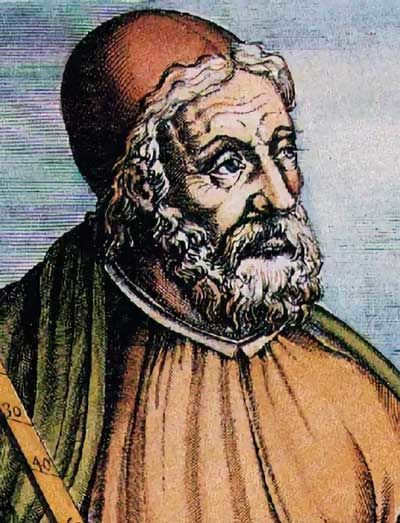
Money has become an essential part of our lives in the modern era. It is hard to imagine a world without the convenience of various stores where we can purchase everything we need. However, this was not always the case. In the past, the concept of “money” was unknown, and people had to find alternative ways to survive. The simplicity of their lives is remarkable:
The Celosia plant can be defined as an annual plant, reaching up to 1 meter in height. It has smooth, branching stems that have a reddish color. The leaves are petiolate and can grow up to 3 cm in length. The upper part of the leaf tapers into a cuneate shape. The inflorescence of the plant is dense and resembles a spikelet.
Novosibirsk, formerly known as Novo-Nikolaevsk until 1926, holds the distinction of being the third most populous city in Russia. It serves as the center of the Siberian Federal District and is also the largest commercial, scientific, economic, and transportation hub in Siberia.
Ptolemy is a figure from ancient times who remains shrouded in mystery. The details of his birthplace and birth time are scarce and difficult to ascertain. However, despite this lack of information, Ptolemy’s scientific works have endured for countless centuries and have remained widely influential. In the realm of geography, Ptolemy stood out as a highly revered figure, so much so that his peers and subsequent generations considered him to be of divine status.
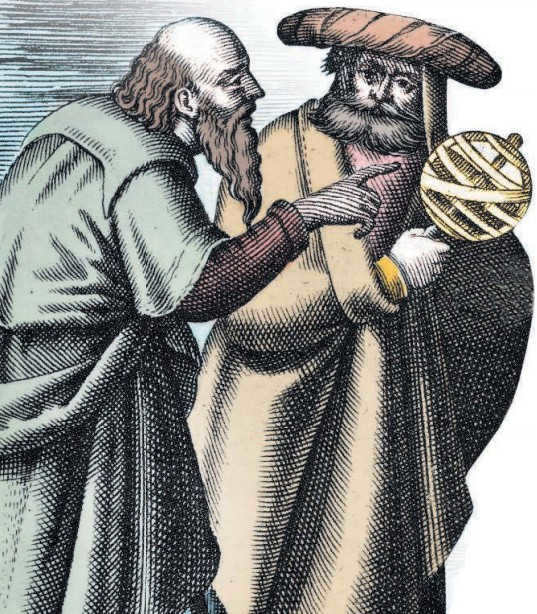

Aristotle (on the left) and Ptolemy (on the right) engaging in a lively debate regarding the structure of the universe. This scene is taken from an illustration found in the book Dialogus de Systemate Mundi by N. Copernicus, published in 1635.
In Works and Deeds
The scientist, in his writings, provided a definitive definition of geography as a scientific discipline. He carefully examined its subject matter and outlined the methods used in its study. Furthermore, he significantly broadened the existing understanding of the Earth and laid the groundwork for the field of country studies. To complement his work, Ptolemy created an atlas consisting of 27 maps, which included 10 maps of Europe, 4 of Africa, 12 of Asia, and one comprehensive map of the known world. The book gained such immense prestige that even in the 19th century, maps of various regions were copied directly from it.
The world is both tangible and imaginary
Ptolemy accomplished a monumental task – meticulously plotting 8 thousand entities on the map, which was an extraordinary feat considering the time period. He meticulously cross-checked the coordinates of each object, relying on astronomical observations and sketches provided by traders. However, these sketches were often erroneous, leading to numerous inaccuracies in the atlas. As a result, the Ptolemaic landmass was unrealistically elongated.
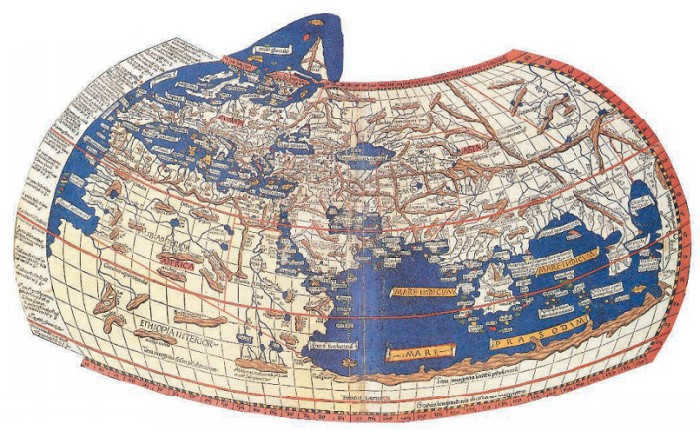

Ptolemy created a map of the world that showed the prime meridian passing through the Canary Islands, which are located at approximately 15° W. The map also depicted Asia as much larger than it actually was, with the known landmass stretching over 180° (though it was actually around 130°). The 180th meridian crossed China and extended all the way to the equator. The Pacific Ocean was shown to be occupied by an unknown land that had not yet been explored by the merchants of the time.
Despite the presence of numerous errors, Ptolemy’s maps are highly accurate. They allow for easy identification of the depicted regions and even offer intriguing details. For instance, Ptolemy includes the Alps, Sudetes, Carpathians, and Sarmatian Mountains in his European map. The exact meaning behind the Sarmatian Mountains is unclear, as Ptolemy suggests they are located north of the Carpathians. It’s possible they represent separate mountain spurs.
Interestingly, the renowned geographer refers to the Sea of Azov as Meotis, after the Meotian tribe, and the river Don, which flows into it, as Tanais. Ptolemy also labels the Volga as Ra. This toponym has historical roots among the ancient peoples of the Volga region, and the Mordovian language still refers to the Volga as Rav. Claudius Ptolemy marked the end of an era of ancient geographical discoveries.
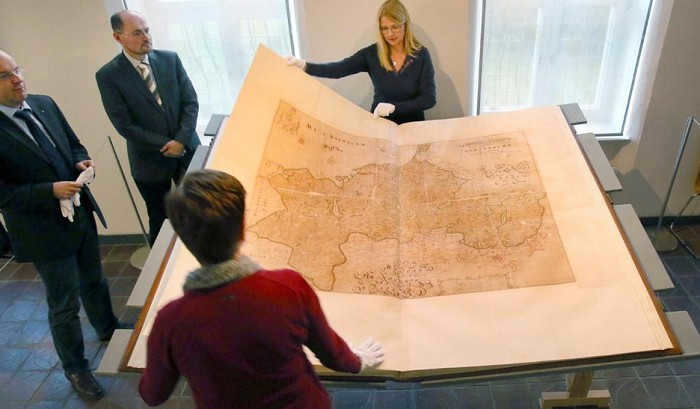

The Berlin State Library houses the world’s largest atlas, known as Johannes Klenke’s Atlas. This incredible book weighs approximately 175 kg, is 2 meters thick, and has a width of 1 meter. It is a truly unique publication that is over 350 years old. Due to its immense size and weight, it requires the combined strength of six people to lift.
When delving into the biography of Ptolemy, one can uncover a plethora of scientific works that greatly influenced the advancement of various fields. Ptolemy was a renowned mathematician, theologian, philosopher, astrologer, astronomer, and geographer. He lived and worked between 95-179 A.D., leaving a lasting impact on humanity with his geocentric model of the world.
- General information
- Brief biography
- Quaternion and other creations
- Fascinating trivia
- Admirers and students
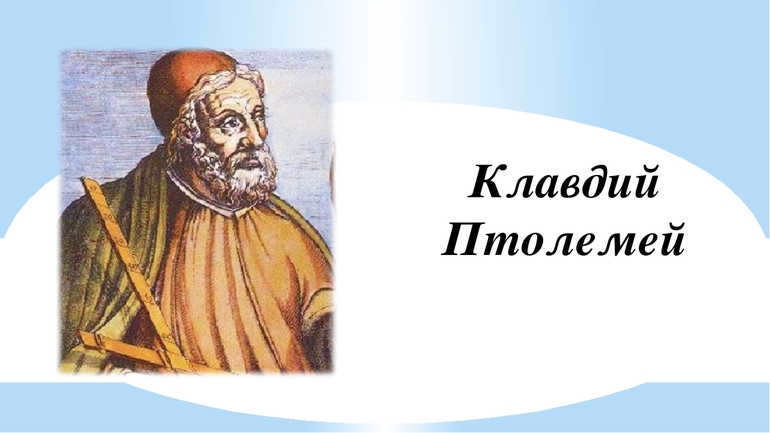

Overview
The contributions of Claudius Ptolemy to the field of science cannot be overstated. His groundbreaking works in optics, astronomy, geometry, chemistry, geography, and mathematics have not only laid the foundation for these disciplines, but also spurred their further development. While many literary works have documented Ptolemy’s accomplishments, his exact birthplace and educational background remain a mystery, as there is no available biographical information even on Wikipedia.
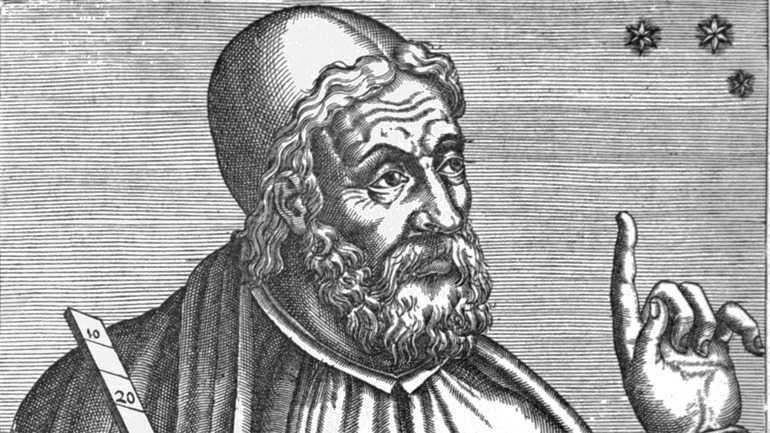
Thanks to his comprehensive analysis and diverse interests, Ptolemy laid the foundation for scientific literature in multiple fields including physics, geography, and musical theory. Furthermore, he formulated the theory that celestial bodies continuously function and move based on a unified mechanism.
Additionally, Ptolemy can be credited for his contributions to astrology, the study of the planets and their influence on human destiny. He also created an astronomical map that documented the visible constellations from the Egyptian region.
During his lifetime, the scientist witnessed the widespread belief in astrology among the general population. He was influenced by the prevailing ideas of his time and acknowledged astrology as an essential component of astronomy:
- Astrology utilizes the influence of stars to predict cataclysms and various events on Earth.
- Astronomy provides crucial information about the planets’ positions, which is necessary for making predictions.
Claudius, however, did not subscribe to the concept of fate. He regarded the influence of stars as just one of the potential factors that could shape events on Earth.
Brief biography
Ptolemy’s biographical details have not been preserved. This is due to the fact that his contemporaries deliberately omitted any mention of this ancient scholar in their writings. The only available information today is derived from the works of philosopher Philip Ball and from Ptolemy’s own scientific treatises. It is established that Ptolemy resided in the city of Alexandria, located on Egyptian territory. Furthermore, there are no records regarding the physical appearance of the scientist, and any depictions of him are merely artistic interpretations based on the sculptures created by ancient artists.
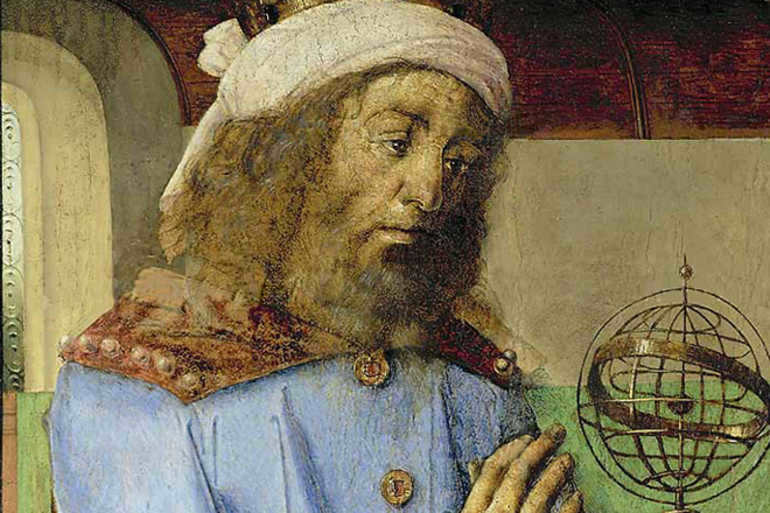
Although Ptolemy’s name suggests Egyptian heritage, and his biography indicates Greek ancestry, his given name Claudius hints at a possible Roman origin.
With insufficient information available, it is impossible to definitively determine Ptolemy’s social class or nationality as a renowned scientist.
Advancements in the Field of Science
Ptolemy played a pivotal role in the progress of scientific knowledge. The mysterious scientist’s influential works greatly impacted the fields of mathematics and astronomy, shaping the foundations of ancient natural science.
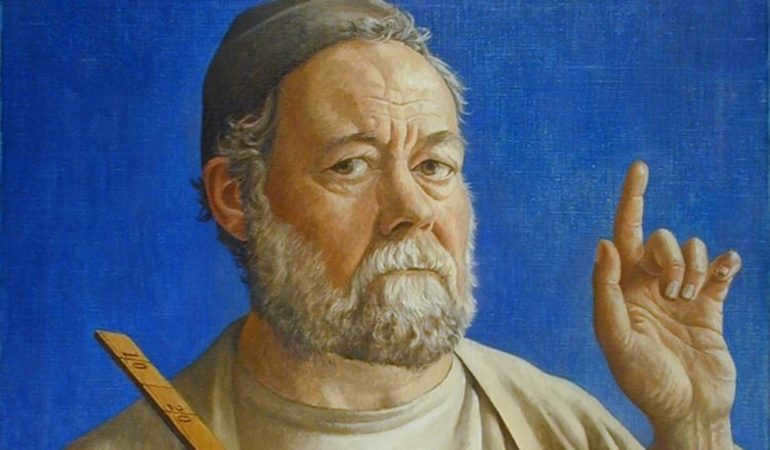
Quaternion and other accomplishments
Ptolemy’s contributions extended far beyond his famous work on astrology, astronomy, mathematics, music, physics, and geography. These diverse works had a profound impact during the Middle Ages:
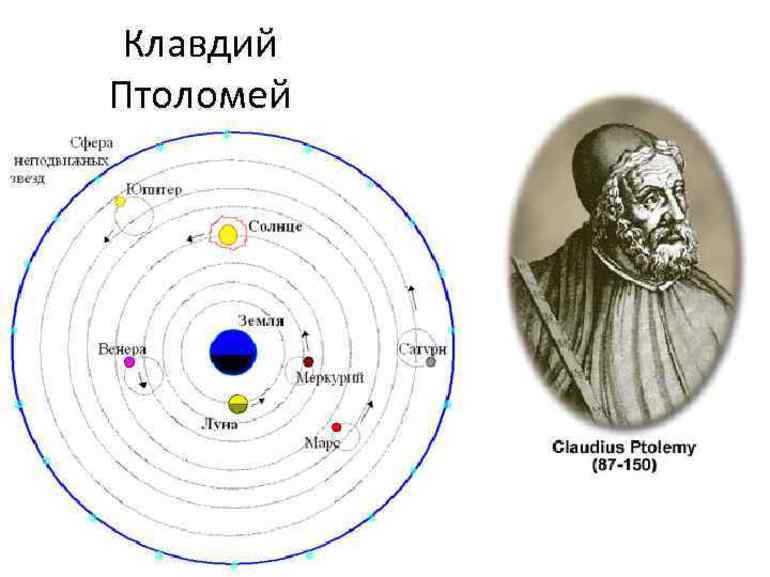
Curious Information
Ptolemy was a polymath and played a crucial role in the advancement of multiple disciplines. Several intriguing details have been recorded about his most renowned accomplishments:
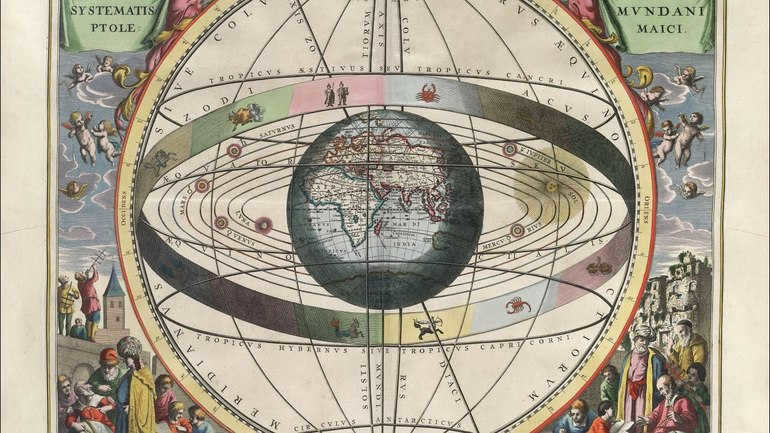
Followers and adherents
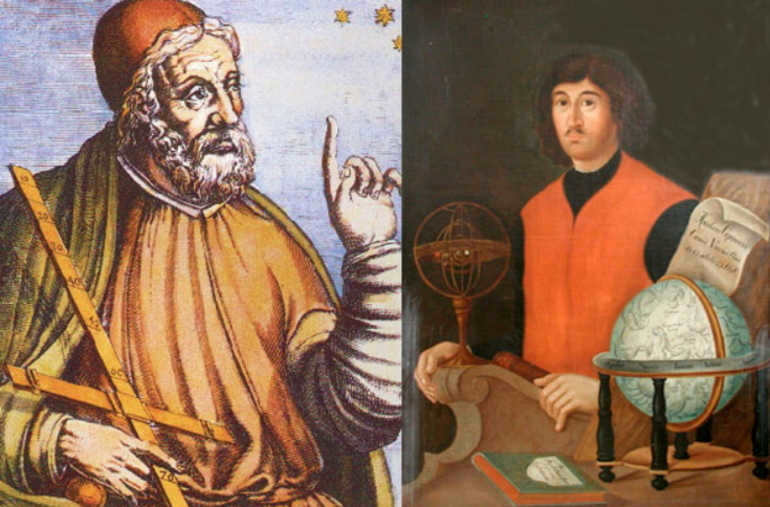
The same work mentions Theon, an ancient scientist whose knowledge Ptolemy utilized for his astronomical calculations. However, whether Theon was Claudius’ mentor or assistant remains unknown. Some historians speculate that Theon could be the ancient philosopher from Smyrna who was a student of Plato. He delved into astronomy and even created a basic map of the celestial sky.
Ptolemy had connections with the scholars at the scientific library in Alexandria, Egypt, where he had unrestricted access to essential literature. Although historical descriptions link him to the Ptolemaic dynasty of Egypt, modern historians believe this association to be coincidental.
Considering the historical records, it can be inferred that during the time when the plague was rampant in African and European nations, Ptolemy might have been one of its victims. However, even centuries after his demise, he remains alive through his works and continues to bring advantages to his descendants.

If you are looking for the answer to the question “What were Ptolemy’s contributions to geography in 5th grade, in 7-10 sentences?” in the subject of Geography, our website has an advanced search engine that will surely guide you to the information you need. Alternatively, you can evaluate answers to similar questions. However, if none of these options help, you can ask your question to knowledgeable individuals who will provide a quick response!
To calculate the length of Africa on the equator, given the geographic coordinates of the western and southern extremes on the equator as 9*sq. e and 43*sq. e respectively.
Describe the natural components of this geographical zone to determine its unique characteristics: This particular natural zone can be found in both the Northern and Southern hemispheres. Its hot and humid climate creates the perfect conditions for a diverse range of tree species to thrive.
Identify at least six branches of agriculture in which Russia ranks among the top ten countries globally for development.
Consider the following options and choose the location where the lowest recorded air temperature on Earth, -89.2 degrees, could have occurred: 1) Oymyakon (Russia) 2) North Pole 3) Antarctica (Vostok Station) 4) Greenland.
Provide a comprehensive answer, consisting of 7-10 sentences, to explain the contribution of Ptolemy to the field of geography for a grade 5 assignment.
Sources:
Report Claudius Ptolemy 5th grade message " /> " /> .keyword < color: red; >Claudius Ptolemy geography 5th grade
Claudius Ptolemy had a significant impact on various disciplines including science, specifically astronomy, physics, mathematics, geography, and even music. His contributions in these areas have been widely documented and continue to be studied today.
There is very limited information available about the scientist’s life. Claudius himself provides only a small amount of data in his writings. One of his well-known works was an astronomy reference book, which includes information on the timing of celestial observations. Based on this, it can be inferred that he lived approximately between 127 and 165 years. It is also known that he resided near the city of Alexandria, in what is now modern-day Egypt. There is also very little information about his physical appearance. Only a few sculptures have been preserved, but they are believed to represent a typical image of a scientist from that time period.
Little is known about Claudius’ personal life. There is no information about whether he had children or his marital status. However, it is known that he had students and assistants who aided him in his experiments and discoveries. The biography of Claudius Ptolemy largely remains a mystery.
His scientific career began with the publication of the “Canopus Inscription,” an astronomical text carved on a stone stele. Although the original stele was destroyed, the information was preserved in Claudius Ptolemy’s manuscripts.
The scientific contributions of Claudius Ptolemy were highly valuable to the field of science. However, his works were later discredited by the renowned poet Omar Khayyam, who discovered inaccuracies in Ptolemy’s findings. It was revealed that the positions of celestial bodies had already been described by the scientist Hipparchus long before Ptolemy’s time. As a result, Ptolemy’s scientific works were deemed irrelevant for a significant period. Eventually, other scientists refuted the claims made by Ptolemy, bringing clarity to the situation.
Report #2
Claudius Ptolemy was an ancient Greek scientist who lived during the 2nd century A.D. Born around 100 A.D. in the Egyptian city of Pelusium, Ptolemy was a Roman citizen as Egypt was part of the Roman Empire at that time. He spent a significant portion of his life, from 127 to 151 years, in the city of Alexandria, Egypt.
Ptolemy’s scientific pursuits encompassed a wide range of fields including astronomy, geography, mathematics, mechanics, optics, and even music. It is likely that the works available at the Library of Alexandria played a crucial role in the development of his scientific endeavors.
In approximately 150 AD, Claudius penned a treatise on the subject of celestial bodies titled the Almagest. Comprised of 13 volumes, this work served as a compendium of astronomical knowledge. Within the Almagest, Claudius expounded upon his own understanding of the universe. According to this text, the Earth occupied the center of the cosmos and was perceived as an immovable planet. Claudius postulated that the Sun and other celestial entities orbited around the Earth. This prevailing belief endured for nearly 1500 years until it was eventually disproven.
In order to observe the expanse of the night sky, Claudius devised specialized instruments, namely the astrolabon and triquetrum.
Ptolemy wrote a book called “Guide to Geography” which contained a collection of geographical knowledge. This book consisted of 8 volumes and Claudius described 8 thousand geographical objects including cities and rivers. Over the next 1000 years, cartographers frequently referenced Ptolemy’s information in their own works. Although Claudius made significant contributions to the field of geography, his works, like his works in astronomy, were not without errors.
Aside from astronomy and geography, Ptolemy also wrote about mathematics, optics, astrology, mechanics, and music. Unfortunately, not all of his works have survived to the present day and some are only known through references made by other scholars.
Claudius Ptolemy
can be rephrased as “The famous astronomer Claudius Ptolemy made significant contributions to the field of astronomy during the Roman Empire.”

Trending post topics
Moscow stands out as one of the most exquisite cities not just in Russia, but globally. It has always captivated tourists of all ages. Naturally, adults have more options here – from sightseeing to various attractions,
Kazakhstan shares borders with multiple countries in the heart of Eurasia. This nation emerged on the world map relatively recently, in 1991. For centuries, the inhabitants of these lands were involved in livestock farming. The topography of Kazakhstan is ideal for grazing,
Vasily Vladimirovich Bykov, a prominent Belarusian writer and public figure, gained worldwide recognition in the late 70s of the 20th century when UNESCO named him the most renowned author. His novels have been translated into 50 languages,
Claudius Ptolemy: A Renowned Figure in Ancient Astronomy

Moscow is renowned for its breathtaking beauty, not just within the borders of Russia, but across the globe. This captivating city has always been a magnet for tourists of all ages. While adults have a plethora of options to explore and discover, children too are not left behind.

Kazakhstan shares borders with several countries in the heart of Eurasia. This nation emerged on the world map relatively recently, in 1991. The inhabitants of these regions have been involved in livestock farming for centuries. The natural conditions of Kazakhstan have been favorable for grazing cattle,
Vasily Vladimirovich Bykov is a Belarusian writer and public figure. In the late 1970s, UNESCO recognized him as the most renowned author globally. The books of this novelist have been translated into 50 languages,
In most instances, the biography of Claudius Ptolemy remains shrouded in mystery to this day.
Sources:
Presentation on Claudius Ptolemy in history for 5th grade " /> " /> .keyword < color: red; >Claudius Ptolemy geography 5th grade
Upon initial inspection, the presentation appears to be well done. There are numerous high-quality thematic images and an adequate amount of easily readable text information. However, there is a section on the 4th slide that includes 5 intriguing points. Regrettably, I was unable to locate all of them while reviewing the rest of the work. Therefore, it seems unnecessary to highlight something that is not present in the presentation.
Upon first inspection, the presentation appears to be quite impressive. It is adorned with a plethora of high-quality thematic images and contains a substantial amount of easily digestible textual information. However, it came to my attention that the 4th slide contains five intriguing points. Regrettably, I was unable to locate all of them while perusing the rest of the work. As a result, it seems rather pointless to highlight something that is absent from your paper.
Presentation Abstract
The presentation focuses on the renowned figure Claudius Ptolemy, who was not only a scientist but also an astronomer, mathematician, and geographer. Ptolemy’s extensive body of work includes studies on constellations, a comprehensive star catalog, and highly accurate geographical maps featuring precise coordinates of various locations. For over 13 centuries, Ptolemy’s teachings served as the foundation for our understanding of the world, while his meticulously crafted maps guided countless explorers and voyagers across different continents.
The mathematical principles that underpin astronomy include the study of the motion of celestial bodies such as the Moon and Sun, as well as the planets. Ptolemy, an ancient astronomer, developed a star catalog and made significant mathematical discoveries in this field.
A student created a presentation on this topic to earn a grade. The presentation focused on Ptolemy, one of the notable discoverers of antiquity.
Claudius Ptolemy, an ancient Greek scholar from Alexandria, had a particular interest in astronomy and geography. One of his significant contributions in astronomy is his renowned work, “The Great Construction” or Almagest, where he presented the geocentric model of the world. Additionally, in his concise biography, Ptolemy compiled a catalog of 48 constellations that he observed in Alexandria. Some critics accuse Ptolemy of plagiarism, as these constellations had already been described by Hipparchus earlier. However, Ptolemy’s work serves more as a reference book, as he recalculated the positions of the stars, considering precession.
When considering Ptolemy’s brief biography, his geographical works are also noteworthy. He meticulously gathered all the geographical knowledge available at that time into a single book, which included precise coordinates. Furthermore, Ptolemy conducted research in optics, taking into account the magnitude of light refraction in his astronomical observations.
- Mathematical foundations of astronomy
- Theory of the motion of the Moon and the Sun
- Ptolemy’s star catalog
- Theory of the motion of the planets
- Ptolemy’s mathematical results
Ptolemy’s map is comprised of a composite map of the entire known world at that time and 26 more detailed maps. Ptolemy’s works gained such authority that even a century after the discoveries of Columbus and Magellan, who overturned the fundamental principles of Ptolemy’s geography, Ptolemaic-style maps were still being published. Some of Ptolemy’s misconceptions were persistently repeated on maps of the 17th and 18th centuries, and his map was the only one to include inner Africa as late as the early 19th century. It was because of Ptolemy’s map that Christopher Columbus was convinced that to reach India, one had to sail westward. Ptolemy’s map
- Sun
- Mercury
- Venus
- Earth
- Moon
- Mars
- Jupiter
- Saturn
- Uranus
- Neptune
- Geocentric world system
- Solar world system
- Earth
- Moon
- Mercury
- Venus
- Sun
- Mars
- Jupiter
- Saturn
- Claudius Ptolemy of Alexandria (90-168)
- He had a special interest in astronomy and geography
- He wrote the “Great Construction” (Almagest)
- He created the “Ptolemaic Map” and the geocentric system of the world.
The culture of ancient Greece is abundant in the works of numerous philosophers, among whom Claudius Ptolemy holds a unique position. He is the author of numerous scientific works. Throughout his lifetime, Claudius Ptolemy devoted himself to geography, astronomy, and mathematics. He was a philosopher, theologian, and astrologer. Claudius Ptolemy established a scientific representation of the universe.
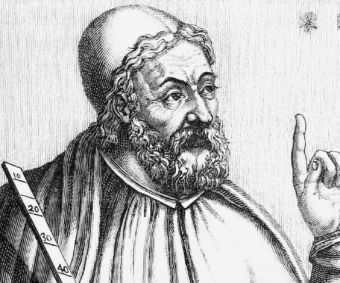
Biography of Claudius Ptolemy
Claudius Ptolemy is a renowned scientist, astrologer, geographer, and philosopher. He is famously known for his contribution to the development of the geocentric system of the world. However, details about his early life remain shrouded in mystery, with no precise information available regarding his birth and death dates. Interestingly, his contemporaries refrained from mentioning Claudius Ptolemy in their works. This can be attributed to the prevailing religious worldview of ancient times, which discouraged individuals from expressing their own scientifically grounded opinions. Given that Ptolemy’s works had the potential to challenge established beliefs about the formation of the world, little was mentioned about him.
Historians believe that Ptolemy hailed from a lineage of royalty, although this theory lacks substantiation. According to the works of physicist Philip Ball, it is known that Claudius resided in Alexandria, Egypt for an extended period of time. Ptolemy’s birth is estimated to have occurred around 68-70, but the exact date remains unknown. There is also no information available regarding his education or family background. Nonetheless, his name, Claudius, suggests a Roman heritage, while limited biographical details indicate a connection to Greece. Consequently, it is impossible to ascertain his nationality with precision.
The primary significance is embodied in the scientist’s writings, which were long regarded as the primary sources on geography, physics, and the cosmos. It is indeed true that these writings no longer hold any comparison to the contemporary scientific understanding of the world. Since there was little knowledge about Claudius for a considerable period, no records of his physical appearance and familial connections have been preserved.
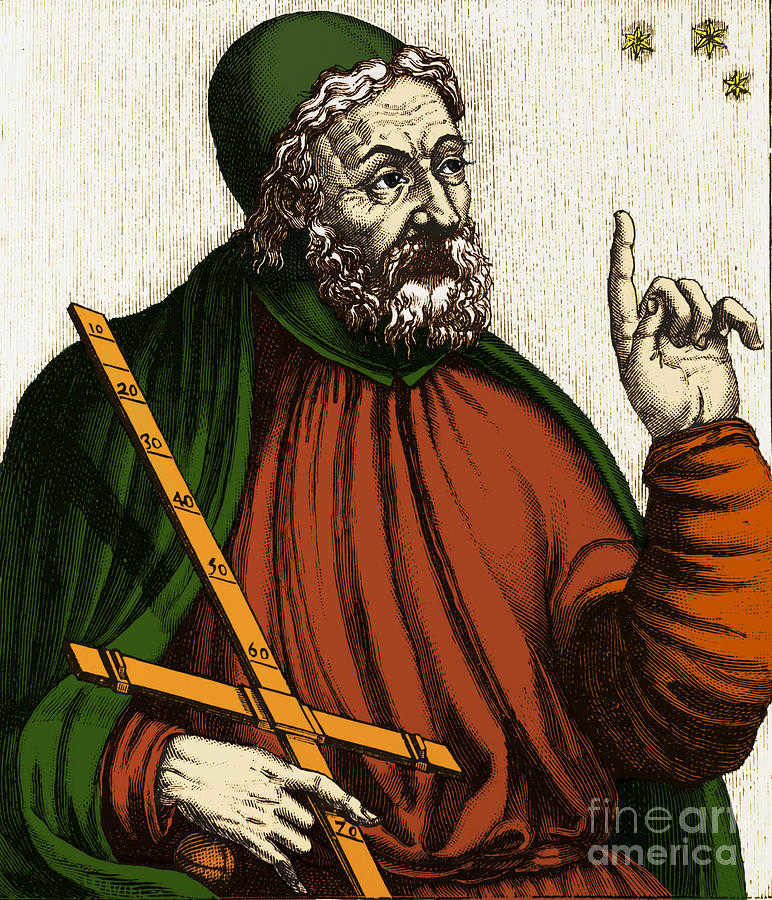
The philosopher Olympiador’s book makes mention of Claudius’ time spent in the city of Canopus in Alexandria. Additionally, Ptolemy’s astronomical research, as documented in the “Almagest,” took place approximately between 127 and 151 AD. This information helps us establish the scientist’s approximate years of life. It is worth noting that after the publication of the “Almagest,” two more books were released, which took the scientist an additional 10 years to complete.
Work and Contributions of Claudius Ptolemy
Due to the peculiarities of that era, only a few of the brilliant scientist’s works have survived. Ptolemy’s geocentric model of the universe faced significant opposition from authorities and religious institutions, resulting in the suppression of his works for an extended period. References to Ptolemy can be found in the writings of his contemporaries, but unfortunately, there is limited information available about his specific works.
The two most significant works attributed to Ptolemy are “Geography” and “Almagest.” These books served as essential teaching materials for numerous future scientists for many centuries. Their accuracy and reliability were unquestioned for an extended period. In “Geography,” Claudius provided coordinates for various locations, territories, and states, and the work also included the earliest geographical maps.
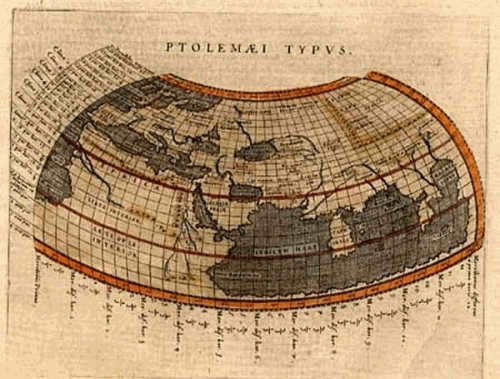
Claudius spent approximately four decades working in Egypt. Ptolemy, who authored numerous scientific books and treatises, played a significant role in shaping both Islamic and European science.
Claudius Ptolemy conducted a multitude of scientific observations and experiments. His initial records were etched onto stones at Canopus, known as the Canopus Inscription, which have managed to survive until the present day. One of his most notable works was the “Almagest,” where Claudius solidly supported the geocentric model of the world, documented the stars in the sky, and recorded astronomical knowledge from ancient Greece and Babylon. These findings remained unchallenged until the introduction of Nicolaus Copernicus’ ideas. Nevertheless, it was the Almagest that propelled Ptolemy to fame as a scientist.

Claudius Ptolemy’s Contributions to Various Sciences
Claudius Ptolemy’s name is not only associated with advancements in astronomy and geography, but also with contributions in optics, physics, and music theory. In his five-volume work on “Optics,” he explores the theory and nature of vision, as well as the refraction of light rays. The book covers topics such as mirrors, the properties of light, and visual illusions.
The scientist’s work “Phases of fixed stars” marked the initial endeavor to create a weather forecast by examining the motion of celestial bodies and physical phenomena on Earth. In the same publication, the author presented findings from the exploration of climatic regions and geographic zones on our planet. Ptolemy gained recognition as a demographer-scientist through the composition of his treatise “Quaternary,” which drew upon Claudius’ research on human lifespan across various epochs.
In his research on the theory of celestial bodies’ motion and their impact on human existence, Ptolemy heavily relied on the writings of a singular scholar – Aristotle. Ptolemy regarded Aristotle’s work as the epitome of truth and therefore utilized it as substantiation for his own observations. Ptolemy posited that individual growth is influenced by one’s date of birth and the alignment of celestial bodies at that specific moment. The scholar genuinely believed that astrological deductions hold practical value in one’s daily life.
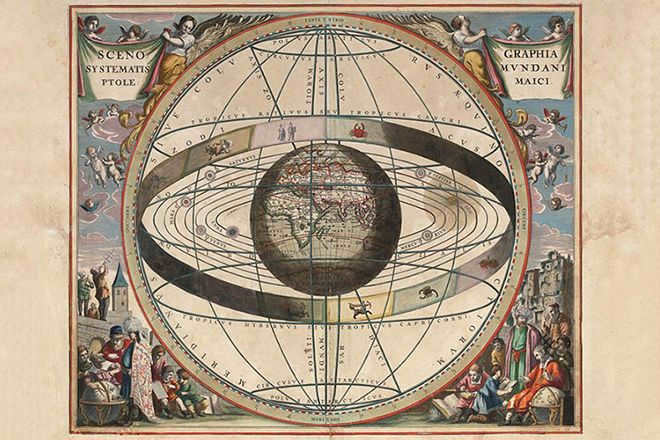
Claudius Ptolemy, an esteemed author, is renowned for his vast collection of reference books. Among his most notable works are his comprehensive guides on geography, in which he skillfully synthesized the knowledge of numerous scientists along with his own observations. A groundbreaking contribution to cartography, he pioneered the creation of the first-ever geographical atlas, encompassing detailed maps of Europe, Asia, and other continents.
Nevertheless, it is imperative to acknowledge that Ptolemy’s work cannot be deemed entirely reliable in the present era. His accounts often contained inaccuracies concerning the size of continents, the positioning of cities, and territorial demarcations. These errors were primarily attributed to the flawed data provided by his contemporaries, as well as the prevailing world view of that period.
Despite these limitations, Ptolemy’s works retain great significance as they serve as an invaluable compilation of the scholarly endeavors of numerous ancient Greek and Roman intellectuals. Notably, Claudius Ptolemy chose not to assert his authorship in these treatises, further emphasizing the collaborative nature of his works.
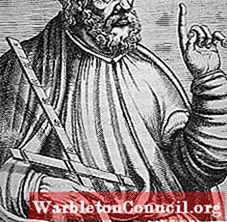
Claudius Ptolemy (100-170) was an Egyptian astronomer, geographer, mathematician, poet, and astrologer who is famous for proposing a geocentric model of the universe known as the Ptolemaic system. He also made an attempt to determine the coordinates of major locations on the Earth in terms of latitude and longitude, although his maps were later found to be inaccurate.
His ideas and theories in geography and astronomy were significant until the 16th century, when Copernicus demonstrated that the planets orbit the sun. Ptolemy’s work was heavily influenced by Hipparchus of Nicaea, a Greek astronomer, geographer, and mathematician.

Ptolemy achieved a remarkable feat by consolidating the entirety of Greek knowledge into the most comprehensive and inclusive work of ancient times. It can be asserted that he was the ultimate and most significant intellectual of the classical era.
Biography
Claudius Ptolemy was born approximately in 85 AD, although some authors speculate that he was born closer to 100 AD. This uncertainty persists due to a lack of historical records detailing his early years.
It is believed that he was born in Upper Egypt, specifically in the city of Ptolemais Hermia, situated on the right side of the Nile River.
Ptolemais Hermia was one of three Greek-founded cities in Upper Egypt, with Alexandria and Naucratis being the other two.
Although there is limited biographical information about Ptolemy, it is known that he spent his entire life working and residing in Egypt.
Several historical sources suggest that Ptolemy primarily dedicated himself to the fields of astronomy and astrology. Additionally, he was renowned as an exceptional mathematician and geographer.
Approach
Ptolemy’s methodology was characterized by a strong emphasis on empiricism, setting him apart from other scientists of his time. He applied this approach consistently throughout his work, seeking to understand and provide explanations for observed phenomena.
It is worth noting that Ptolemy’s descriptions were not always intended to be accurate representations of the phenomena he studied. Rather, his aim was to justify and comprehend the reasons behind these phenomena based on his observations.
One notable example of this is his exploration of the theory of epicycles, originally proposed by Hipparchus of Nicaea and further developed by Ptolemy. Through this theory, he endeavored to establish a geometric explanation for the motions of stars.
Hipparchus of Nicaea, who lived from 190 to 120 BC, was a notable figure in the fields of geography, mathematics, and astronomy.
Although there is no direct information available about Hipparchus, we have gathered knowledge about him from the Greek historian and geographer Strabo, as well as from Ptolemy himself.
Ptolemy frequently acknowledged Hipparchus’s accomplishments and credited him with various inventions. One of these inventions was a compact telescope, which greatly enhanced the process of measuring angles and allowed for the determination that the solar year lasted approximately 365 days and 6 hours.
Furthermore, Hipparchus’s influence on Ptolemy can be observed in Ptolemy’s seminal work, the Almagest. In the subsequent sections, we will delve into the significance of this important publication.
Ancient Library of Alexandria
During his time in Alexandria, Ptolemy dedicated himself to observing the stars under the rule of emperors Hadrian (117-138) and Antoninus Pius (138-171).
Ptolemy is considered to be a part of the second era of the Alexandrian school, which took place after the Roman Empire’s expansion.
While there is no concrete evidence, it is believed that Ptolemy conducted his work within the renowned Library of Alexandria. It is possible that his time there granted him access to the knowledge of previous astronomers and geometers.
If the theory is accurate, it is believed that Ptolemy was the one who gathered and organized the extensive knowledge of ancient scholars, particularly in the realm of astronomy, thereby giving significance to a dataset that could potentially date back to the third century BC.
It is also documented that Ptolemy’s efforts went beyond simply organizing and compiling existing important works, as he also made notable contributions to the field of astronomy, especially in relation to planetary motion.
Almagest
While he was working in the Library of Alexandria, Ptolemy released a publication that became his most iconic piece and his most significant contribution.
This publication was named The Great Mathematical Compendium of Astronomy. However, it is now more commonly recognized as Almagest, a term derived from the medieval phrase Almagest, which in itself originates from the Arabic word al-magisti, meaning “the greatest”.
The version of this publication with the Arabic title is the earliest version to reach the Western world.
Easy Language
A crucial aspect of Claudius Ptolemy’s philosophy is his recognition of the significance of conveying his ideas clearly to all those who engage with his writings.
He understood that by doing so, knowledge could be made accessible to a wider audience, regardless of their mathematical background. It was also a means to popularize that knowledge.
Therefore, Ptolemy authored a parallel version of his theory of planetary motion, employing simpler and more comprehensible language specifically tailored for individuals without mathematical training.
Ptolemy was not only a renowned geographer, but he also excelled in cartography. He meticulously crafted a multitude of maps, each one meticulously pinpointing crucial locations by means of specific longitude and latitude coordinates.
While these maps were undeniably groundbreaking for their time, they were not without their flaws. Understandably so, considering the limited resources and technology available during that era.
Intriguingly enough, it has been documented that Christopher Columbus, the Spanish conquistador, relied on one of Ptolemy’s maps during his voyages. This reliance on Ptolemy’s cartographic expertise led Columbus to believe that it was indeed possible to reach India by traveling westward.
The Passing of Claudius Ptolemy
The esteemed scientist Claudius Ptolemy met his demise in the ancient city of Alexandria approximately in the year 165 AD.
Contributions to the World of Science
Exploring the Depths of Astronomy
Ptolemy’s most notable accomplishment in the realm of astronomy is his renowned work, the Almagest. This masterpiece was inspired by the groundbreaking research conducted by Hipparchus of Nicaea. In this extraordinary book, Ptolemy puts forth the notion that the Earth is positioned at the center of the universe and remains motionless. According to his theory, the sun, moon, and stars all revolve around our planet.
Based on this premise, Ptolemy asserts that all celestial bodies move along perfectly circular orbits.
Additionally, he boldly presents his measurements of various celestial entities, including the Sun, Moon, and an impressive assortment of 1,028 stars.
Astrology
In antiquity, it was believed that an individual’s character was shaped by the positioning of the Sun or Moon during their birth.
Ptolemy composed his renowned treatise on astrology, known as Tetrabiblis (Four Books), a comprehensive work on the principles of astrology and horoscopes.
According to his theories, he posited that the afflictions or illnesses that individuals experienced were a result of the influence exerted by the sun, moon, stars, and planets.
Each celestial entity had a distinct impact on specific aspects of the human physique.
Optics
Ptolemy made significant contributions to the study of the law of refraction in his work called Optics.
Geography
One of Ptolemy’s most influential works is Geography, which he completed due to Marino de Tiro’s inability to finish it.
This work presents a collection of accurate map-making methods, including various systems of projections and coordinates of major locations around the world.
While Ptolemy’s maps served as a precedent for more precise cartography, he did exaggerate the size of Asia and Europe.
Ironically, based on these maps, Christopher Columbus decided to embark on his voyage to India, believing that Europe and Asia were the only known territories, and planning to sail from east to west.
Undoubtedly, Ptolemy made significant contributions to the field of geography. He was a pioneer in the creation of maps that included coordinates, longitude, and latitude. Despite the fact that these maps contained numerous errors, they established a foundation for future advancements in cartography and earth sciences.
One could argue that Ptolemy’s work helped refine techniques for map projection and the visual representation of concepts such as “parallel” and “meridian” when drawing imaginary lines of longitude and latitude.
In the realm of music, Ptolemy penned a scholarly work on the principles of music known as Harmonics. He posited that mathematics exerted a profound influence on both musical systems and celestial bodies (Wikipedia, 2017).
Ptolemy maintained the belief that specific musical notes were derived directly from particular planets. He surmised that the distances between these celestial bodies and their movements had the potential to alter the sound produced by instruments and music as a whole.





